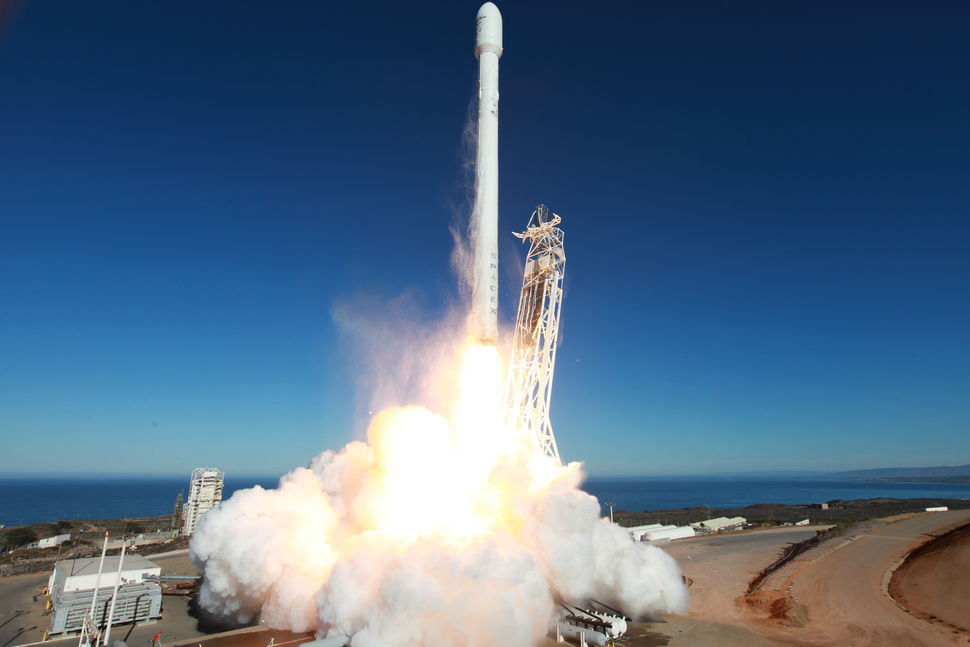


In a historic feat, SpaceX successfully caught its Falcon Heavy booster mid-air using giant mechanical arms after its test flight in Texas. This accomplishment, spearheaded by CEO Elon Musk, marks a crucial step in the company's goal of reusing rockets and cutting costs. With future Starship launches planned for the Space Coast, this revolutionary booster recovery will play a key role in ensuring public safety and advancing the space industry towards the future.
SpaceX's Falcon Heavy: Reusable Rocketry Takes Flight
In a groundbreaking achievement, SpaceX recently demonstrated the capabilities of its reusable Falcon Heavy rocket by successfully catching its booster mid-air during a test flight in Texas. This feat marks a significant milestone in the company's mission to revolutionize space travel by significantly reducing launch costs.
Background: The Quest for Reusable Rockets
The cost of spaceflight has long been a major barrier to exploration and commercial endeavors. Reusable rockets offer a potential solution by reducing the need to build and expend a new rocket for each launch. SpaceX, founded by CEO Elon Musk, has been pioneering the concept of reusable rockets since its inception.
The Falcon Heavy: A Powerhouse Reborn
The Falcon Heavy is SpaceX's most powerful rocket to date, designed to carry heavy payloads to orbit. It consists of a central core booster and two side boosters, all powered by SpaceX's Merlin engines.
The Mid-Air Catch: A Revolutionary Technique
After the Falcon Heavy launched, the side boosters separated from the core booster and re-entered the Earth's atmosphere. Instead of crashing into the ocean, as in traditional rocket landings, SpaceX deployed a pair of gigantic mechanical arms on a barge in the Gulf of Mexico. These arms successfully caught both side boosters mid-air, marking the first successful landing of a rocket booster on a moving platform.
Benefits of Reusable Rockets
Top 5 FAQs on the Falcon Heavy and Reusability
1. Why is the ability to catch boosters mid-air important? It allows for more precise and controlled landings, reducing the risk of damage to the boosters and the recovery equipment.
2. How does the recovery barge stabilize itself in the ocean for the mid-air catch? The barge uses multiple powerful thrusters and a sophisticated control system to maintain its position and orientation in the water.
3. Are the boosters damaged during the mid-air catch? Minor damage may occur, but SpaceX has developed techniques to minimize it and ensure the boosters can be reused multiple times.
4. How often can the Falcon Heavy boosters be reused? SpaceX estimates that the boosters can be reused up to 10 times or more.
5. What are the future plans for reusable rocketry? SpaceX is developing Starship, a fully reusable spacecraft and rocket system designed for carrying humans and cargo to Mars and other destinations.
Conclusion
SpaceX's successful recovery of the Falcon Heavy boosters is a testament to the company's innovative engineering and its unwavering commitment to revolutionizing space travel. Reusable rockets have the potential to transform the economics of spaceflight, enabling more affordable access to orbit and unlocking new frontiers for exploration and commercial endeavors.

As World AIDS Day approaches, conversations around HIV prevention in India are becoming more open and informed. In particular, there is growing interest in PrEP (pre-exposure prophylaxis), a medicine that offers strong protection against HIV when used correctly. With rising awareness and more accessible sexual-health services, doctors are seeing a steady rise in patients asking about PrEP as a proactive health choice. This signals a shift towards informed prevention and a stigma-free dialogue surrounding HIV.

ISRO has been making continuous efforts to establish contact with the Vikram lander and Pragyan rover, which were put into sleep mode earlier this month, ahead of the lunar night. However, the prolonged spell of cold weather conditions, reaching up to -150 degrees Celsius, has made it difficult for them to wake up. With the sunrise on the Moon's south polar region and their solar panels believed to be optimally charged now, ISRO is hoping to revive the lander and rover and continue with their experiments and studies. The latest update from ISRO is that the plan to reactivate them has been delayed to September 23 due to the extreme lunar weather conditions.

Monsoon season may bring romantic vibes, but it's also a nightmare for contact lens wearers. Rainwater contains bacteria and pollutants that can cause eye infections, especially when wearing contact lenses. Ophthalmologists recommend using glasses instead and practicing good hygiene to avoid irritation and infection.

India's first human spaceflight mission, Gaganyaan, is one step closer to reality as ISRO successfully tested the main parachutes for the mission's Crew Module. The test, conducted at the Babina Field Firing Range in Uttar Pradesh, is part of the qualification process for the Gaganyaan parachute system. The system, which includes 10 parachutes of different types, is designed to ensure the safe and stable descent of astronauts returning to Earth. This milestone test marks a crucial step forward for India's ambitious space exploration goals.

As World Pneumonia Day is observed on November 12, experts are drawing attention to the dangerous link between air pollution and respiratory illnesses. In India, the post-Diwali smog adds to the already high levels of pollution, increasing the risk of pneumonia, particularly among vulnerable populations. While outdoor air pollution is often blamed, experts emphasize that poor indoor air quality also plays a significant role in triggering and worsening respiratory infections. Health professionals are urging for better air quality regulations and precautions to prevent this deadly connection between pollution and pneumonia.

On November 12, 2025, the world will once again mark World Pneumonia Day, a global health observance highlighting the urgent need to combat one of the leading causes of death, especially in young children. Despite being preventable and treatable, pneumonia continues to claim millions of lives each year, but efforts such as the ‘Every Breath Counts’ coalition and the Global Action Plan for the Prevention and Control of Pneumonia and Diarrhoea are working towards reducing preventable deaths through vaccination and improved healthcare access. Let us continue to raise awareness and take action against this preventable killer.

As an expectant mother, it is important to be aware of the warning signs that could indicate a potential complication during pregnancy. Dr. Swatee Gaggare, a Consultant in Obstetrics & Gynaecology, shares important insights on the key warning signs every pregnant woman should know. These include unusual bleeding or spotting, severe cramps or abdominal pain, and excessive vomiting. Early detection and prompt medical intervention are crucial for a safe outcome for both mother and baby.

November 10 marks World Science Day for Peace and Development, a celebration that highlights the crucial role of science in our daily lives. This year, the event will take place in Samarkand, Uzbekistan, where the theme "Trust, Transformation, and Tomorrow: The Science we Need for 2050" will be explored. Through public engagement and education, scientists aim to address global issues and create a better future for our planet.

On World Tsunami Awareness Day, scientists are highlighting the importance of traditional knowledge in predicting and preparing for tsunamis. Coastal communities have long relied on observing animal behavior to sense environmental changes and predict natural disasters. This technique has proven effective in areas without advanced warning systems. Scientists are now studying these natural warning signs to improve early detection and save lives in vulnerable regions.

Every year, India celebrates the birth anniversary of the renowned physicist CV Raman, who is known for his groundbreaking work on light scattering and the Raman Effect. Despite receiving numerous offers to work in Western labs after winning the Nobel Prize in Physics, Raman remained committed to his belief in fostering a strong scientific culture in India and mentoring future scientists. His discovery of the Raman Effect continues to be relevant and widely used in various fields today, serving as a testament to the quantum nature of light and the energy levels in molecules.